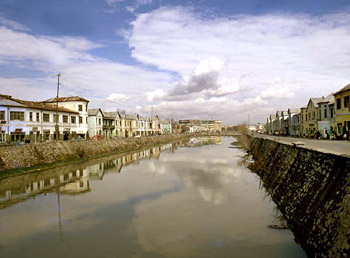 The Kabul River emerges in the Sanglakh Range of the Hindu Kush Mountains in Afghanistan. More specifically, this river is the main river in the eastern part of Afghanistan. It is also known as the Kabal River.
The Kabul River emerges in the Sanglakh Range of the Hindu Kush Mountains in Afghanistan. More specifically, this river is the main river in the eastern part of Afghanistan. It is also known as the Kabal River.
History of Kabul River
Kabul River finds its mention in the Arrian`s, the Campaigns of Alexander. This river was earlier known as Kubha, which is a Sanskrit word. This Sanskrit word was later changed to Kabul. This river is also mentioned in the Rig Veda, the earliest scripture of Hinduism, under the name of Kubha. Many other rivers of Afghanistan are also mentioned in the Rig Veda. Al-Biruni called this river "the River of Ghorwand". The Kabul River later gave its name to the region and later to the settlement of Kabul.
Geography of Kabul River
Globally, Kabul River can be pinpointed at coordinates 35 degrees 55 minutes 0 seconds north and 72 degrees 13 minutes 56 seconds east. The Kabul has a length of about 700-kilometre (430 mi) and the basin of about 66,000 square kilometres (25,483 sq mi). This river is a little more than a trickle for most of the year, but swells in summer due to melting snows in the Hindu Kush Range. On the north side of the Kabul River, Buddhist caves have been carved into a set of cliffs.
Course of Kabul River
Kabul River starts its journey from an elevation of about 2,400 m (7,874 ft). Its source is the Hindu Kush Mountains, whereas its mouth is the Indus River, located in Attock. This river passes through the cities of Kabul and Jalalabad in Afghanistan before flowing into Khyber Pakhtunkhwa in Pakistan, about 25 kilometres (16 mi) north of the Durand Line border crossing at Torkham. The Unai Pass separates this river from the watershed of the Helmand.
Tributaries of Kabul River
Kabul River has tributaries on its left and right. Panjshir River, Kunar River, Alingar River and Swat River are its left tributaries, whereas Logar River and Bara River are it"s tributaries on the right. The Kunar River is the largest tributary of the Kabul River. The Kunar River starts it"s journey in the north glaciated Hindu Kush Mountains of Chitral, Khyber Pakhtunkhwa, Pakistan. It flows downstream from Mastuj to its confluence with the Lutkho River, which is located north of Chitral. It flows south into the upper Kunar Valley of Afghanistan and then joins the Pech River, at the confluence in Asadabad (also known as Chaga Sarai). It then flows towards the Kabul River, just to the east of the city of Jalalabad in Afghanistan and amalgamates with it. It then continues as the Kabul River. This is due to the political and historical significance of the name, Kabul.
Dams of Kabul River
Several dams are surmounted on the Kabul River. They are the Naghlu, Surobi, Darunta and Warsak dams. The first three are located in Kabul and Nangarhar provinces of Afghanistan. Warsak dam is located in Pakistan. More specifically, this dam is located approximately 20 km northwest of the city of Peshawar.
Related Articles:
Indian Rivers
Himalayan Rivers
Indus River
Coastal Rivers
Deccan Rivers
Narmada River



















